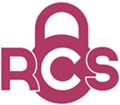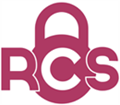Story
‘Let’s REVERSE this TOGETHER’
Over many years I have raised thousands of pounds to help children throughout the world, whilst being in and out of the UK; however, this event is different, it’s for personal reasons!
Although a £500 target has been set please help me raise as much as possible x
In June 2019 our family was utterly devastated to discover our 13 year old daughter was showing the late signs of Idiopathic Scoliosis, a rare deformity which caused a severe curvature of the spine. We, like most parents and the children it affects didn’t know what was happening until it was too late. To highlight the aggressive nature of this condition four weeks earlier Freya was deformity free, we had been on holiday where she had spent time around the pool in a swimming costume; however, at the time of identifying it her deformity was measured at a staggering 74 degrees!
As a Paramedic who has a sound knowledge of first aid, I couldn’t understand why I of all people wouldn’t have seen it, surely, I was
aware to things like this! The answer we learnt, and the answer most parents hear when discussing this with the amazing consultants who correct these conditions is there was nothing we could have done. Freya was pain free, is a teenage girl so is able to wash, dress and clothe herself, all without the prying eyes of her parents!
Freya was lucky to have surgery six months later and although at the time she had progressed to over 90 degrees she was able to have the long operation to insert two titanium rods. And, after a short spell in intensive care and amazing love and care from the
doctors and nursing staff she was able to come home to convalesce.
Sadly, Scoliosis affects 4/1000 children in the UK. To bring this to reality after Freya was diagnosed, we were gobsmacked to find many of our friends either knew someone who had been diagnosed or their child had been diagnosed in the past!
It is my intention to conduct an unusual fundraising event to highlight this terrible condition. My reason is simple, I would like to stop other children and parents going through what our family experienced, and the only way to achieve this is through support, awareness and research. Any money raised will be split between the
British Scoliosis Research Foundation (BSRF) www.bsrf.co.uk . This foundation is the only UK charity that exists solely to promote research into scoliosis. Their vision is to contribute to discovering the cause of idiopathic scoliosis and to improve the quality of life for people with all types of scoliosis. My second choice is the Masonic
Charitable Foundation who generously paid for Freya to have the
operation, www.mcf.org.uk. The MCF is one of the largest grant-making charities in the country whose aim is to build better lives by enabling opportunities, advancing healthcare and education and
promoting independence.
Why will my fundraising be different and difficult?
Unfortunately, I was medically discharged from the Army following injury to my lower right leg. After numerous surgical operations the bones in my ankle and right foot have been fused together making walking extremely difficult and painful so, I intend to walk from the place she was diagnosed (Portland in Dorset) to Southampton General Hospital (Hampshire). This will be 70.6 miles or 113.6 KM,
when taking A and B roads. This will be extremely difficult due to the
injury but to make it more difficult I will complete this by walking the
distance BACKWARDS. My eyes and ears throughout the journey will be another veteran, who will walk forwards. Numerous children suffer difficulties through scoliosis, so I want this challenge to be as
difficult as possible!
It was my intention to complete a fundraising event in 2020 but COVID-19 dictated I would be giving medical help throughout 2020/21
Please would you show you support by following us on the journey and sponsoring us on our just giving teams page.
Best wishes and love to you all
What is Scoliosis
Adolescent idiopathic scoliosis is a change in the shape of the spine during the child’s growth. It results in the spine curving sideways and twisting at the same time. This twisting can pull the ribcage out of position, often leading to a hump on one
side of the ribs. When this happens between ages 10 and 18 it is called adolescent idiopathic scoliosis (AIS).
The word idiopathic means there is no known cause. Research continues into the causes of scoliosis but it does seem to run in
families. It is not caused by anything the child or parent did or did not do. AIS affects both girls and boys but is much more common in girls.
The important thing is to make sure that your GP arranges a referral to a specialist unit (within an NHS hospital) that treats scoliosis
early on. Diagnosing scoliosis early on can sometimes make treatment more straight-forward.
Diagnosis
The most common time for scoliosis to develop is during adolescence. At this time scoliosis can be difficult to spot as
teenagers are often covered up and their parents do not usually see them undressed.
A quick forward bend test (see image below) can help to check whether a child has scoliosis. The test is very easy to do and can be done by a doctor or parent/guardian. The child will need to uncover
their back so that their shoulders and spine can be clearly seen. Ask the child to bend forward from the waist and to keep their legs and arms straight. You will need to look at the child from behind. If the child has scoliosis you should be able to see a clear bulge on one side of the back where the ribs are.
As well as the forward bend test, there are some other common signs of scoliosis to look out for. Sometimes one shoulder blade
will stick out more than the other, a child might lean a little to one side, or one hip might be higher than the other. The forward bend test is only an aid to check for scoliosis and only a medical professional can make a diagnosis.
The earlier scoliosis is diagnosed and treated the better. If you think that you or your child might have a curvature you should visit your doctor who can check and may be able to give you a diagnosis. If
your doctor confirms that you have scoliosis, you will need to see a scoliosis specialist. You should ask your doctor to arrange the referral to a specialist centre as soon as possible.
What happens next?
Your doctor will be able to refer you or your child to the care of a scoliosis specialist. Sometimes your doctor might not have the
most up-to-date list of these specialists. If not, you can contact SAUK. We will let you know where your nearest NHS/private scoliosis specialist centre is and the names of the specialists.
After scoliosis has been spotted, the doctor will refer the patient to a scoliosis specialist. The specialist will need to examine the patient. They will also take X-rays.
These X-rays should show the child’s spine from top to bottom and include some parts of the shoulders and hips. The X-rays allow the specialist to see if the spine has any other problems such as extra/missing/fused vertebrae (small bones that make up the spine) or if the spine has developed a curve for no known reason.
CT and MRI scans are sometimes done to show more detailed pictures of the spine and check that there are no problems with the
spinal cord.
Treatment
Monitoring
The specialist may recommend waiting and keeping an eye on the curvature. A specialist normally checks on the child’s curve every
6-12 months. If your child is growing quickly they might need to be checked more often. The specialist will check to make sure the curve does not increase. If the curve is getting bigger the specialist might suggest further treatment:
Bracing
The idea is that bracing will slow down the growth of a curve. There are several different kinds of braces for young children and teenagers. Each type is usually made of lightweight plastic. Your child will be able to choose the colour and design. The brace is fitted to the shape of the body and it has padding and straps to hold it in place.
A skilled brace maker called an orthotist will fit the brace. You might need to visit the orthotist more than once to make sure the brace fits comfortably. Braces are usually worn for at least 18 hours a day. They should be removed only for washing.
Not all scoliosis specialists offer bracing as a treatment, because bracing does not always stop the patient from needing surgery later on. Some curves are not suitable for bracing and your specialist
will be able to inform you of this.
Surgery
Sometimes a curve continues to grow quickly. It might reach a large size, which may mean that non-surgical treatments are unlikely to work. In this case, a specialist may recommend surgery to correct
the curve. This surgery is sometimes called fusion surgery. Every scoliosis is different, and every operation is different. Your specialist will talk to you about what the advice is for your child’s spine.
Choosing whether surgery is the right option is a big decision. The decision is always taken on an individual basis after discussion between the parents, the scoliosis specialist, and most importantly,
the patient.
Teenagers in particular need to be involved in such a major decision so that they feel in control of their treatment, which can help to reduce worry and anxiety.
The advice that surgery might be needed can come as a shock for the child and the family. This can make it difficult to think clearly when you are in the consultation room with the specialist. Sometimes unanswered questions come to mind after the consultation. The best thing to do is to write down these questions, which will help you to remember to discuss them the next time you see the specialist.
Families can also call SAUK as it can sometimes help to talk things through. We can direct you to information and resources that may help. You may find it useful to talk to members who have gone through surgery and discuss their experiences.
Patients and their families should have as full an understanding as possible of what is involved, both before and after surgery. Being prepared for what will happen can greatly reduce anxiety and stress
Prognosis (outcome)
Techniques for the treatment of AIS have advanced a lot in recent years. How well a treatment works for each patient depends mainly
on the size and nature of the curve. Sometimes when a curve is very large and stiff the main aim of surgery is to stop the curve from getting bigger. Therefore, the changes to body shape might not be as much as expected. For smaller and more flexible curves the difference might be more noticeable. Most patients are generally pleased with the outcome of surgery.
Information kindly supplied by info@sauk.org.uk

